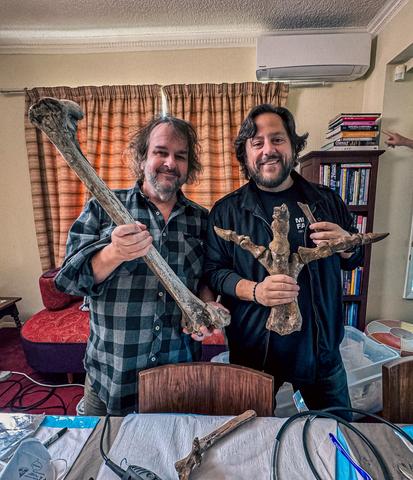| IN A NUTSHELL |
|
Colossal Biosciences, an organization identified for its groundbreaking de-extinction tasks, is embarking on an audacious new enterprise: the potential resurrection of New Zealand’s mighty moa. These flightless giants roamed the islands till round 1400, when human actions led to their extinction. At this time, Colossal goals to not solely convey again these unbelievable creatures but in addition spark an ongoing dialog concerning the ethics and feasibility of such endeavors within the scientific neighborhood. With developments in genetics and a dedication to collaboration, this challenge might redefine our understanding of biodiversity and conservation.
Colossal Biosciences and Their Daring Imaginative and prescient
Colossal Biosciences has already made waves with its formidable makes an attempt to resurrect the woolly mammoth and the dodo. Now, the corporate units its sights on the moa, a colossal hen that when towered over the landscapes of New Zealand. The moa represents not only a scientific problem however a cultural image of the nation’s misplaced pure heritage. Standing over 11 ft tall and weighing as much as 500 kilos, the moa was a lot bigger than the trendy ostrich, which itself is a formidable hen.
To realize this imaginative and prescient, Colossal plans to work carefully with indigenous teams, researchers, and consultants. The corporate has joined forces with the Ngāi Tahu Analysis Centre on the College of Canterbury. Their instant objective is to sequence the genomes of all 9 species of moa utilizing historical bones. By leveraging these genetic blueprints, Colossal hopes to recreate the moa by altering the DNA of its closest dwelling kinfolk, such because the tinamous of Central and South America or the Australian emu. The completion of those genomes is anticipated by the summer time of 2026, marking a pivotal step ahead within the challenge.
The Science Behind De-Extinction
The method of de-extinction includes complicated genetic engineering strategies. For the moa, these strategies will contain altering the genome of associated dwelling species to match that of the extinct hen. That is just like the method utilized in different de-extinction efforts, the place scientists make the most of the closest kinfolk to resurrect species. As an illustration, the Nicobar pigeon is being studied to assist convey again the dodo. The chief scientist at Colossal, Beth Shapiro, has emphasised the significance of figuring out what made the moa genetically distinctive by evaluating its DNA sequences to these of current hen species.
One of many distinctive challenges in avian de-extinction is the event of hen embryos inside eggs, which differs considerably from mammalian embryonic growth. This requires modern approaches to embryo switch and genetic manipulation. Regardless of these hurdles, the challenge has garnered vital curiosity and funding, together with $15 million from famend filmmaker Peter Jackson and his associate Fran Walsh. Jackson’s private assortment of moa bones underscores the cultural and scientific fascination with these historical creatures.

Moral Issues and Scientific Debate
Whereas the prospect of bringing again the moa is thrilling, it reignites moral debates inside the scientific neighborhood. Critics argue that creating an animal that merely resembles an extinct species could not equate to a real revival, as the unique behaviors and ecological roles of the species are unknown and can’t be recreated by genetics alone. Conservationists additionally query whether or not de-extinction diverts assets from current efforts to guard endangered species.
Colossal’s earlier challenge on dire wolves has confronted related scrutiny. Though the corporate efficiently modified grey wolf cells to exhibit dire wolf-like traits utilizing CRISPR know-how, many scientists stay skeptical concerning the implications of such genetic modifications. The talk continues as as to whether de-extinction serves as a real conservation instrument or a distraction from urgent environmental challenges. Nonetheless, Colossal’s endeavors spotlight the potential of genetic applied sciences to revolutionize our method to biodiversity.
Seeking to the Future
As Colossal Biosciences progresses with its moa challenge, it guarantees to reshape our understanding of ecology and conservation. The collaboration with indigenous communities and the scientific neighborhood underscores a dedication to moral and sustainable practices. The eventual objective is to reintroduce the moa into the wild, restoring a misplaced piece of New Zealand’s pure heritage.
Within the face of unprecedented environmental challenges, the opportunity of de-extinction presents each hope and controversy. Will these scientific developments result in a brand new period of biodiversity restoration? Or will they increase extra moral questions than options? As we stand getting ready to doubtlessly witnessing the return of the moa, the world watches with anticipation. What different species would possibly science convey again from extinction, and the way will these efforts form the way forward for conservation?
This text relies on verified sources and supported by editorial applied sciences.
Did you prefer it? 4.5/5 (30)
This is premium stuff. Subscribe to read the entire article.
Support Greater and Subscribe to view content














